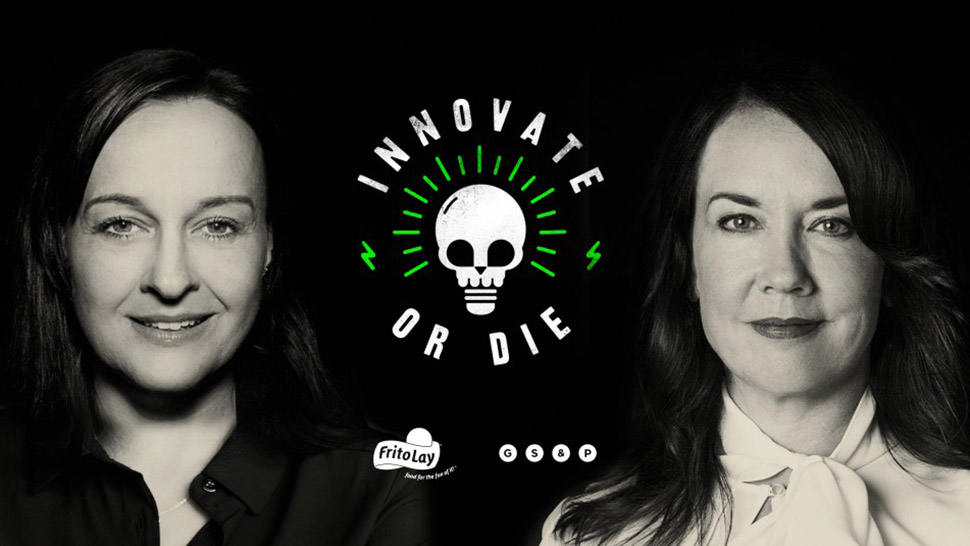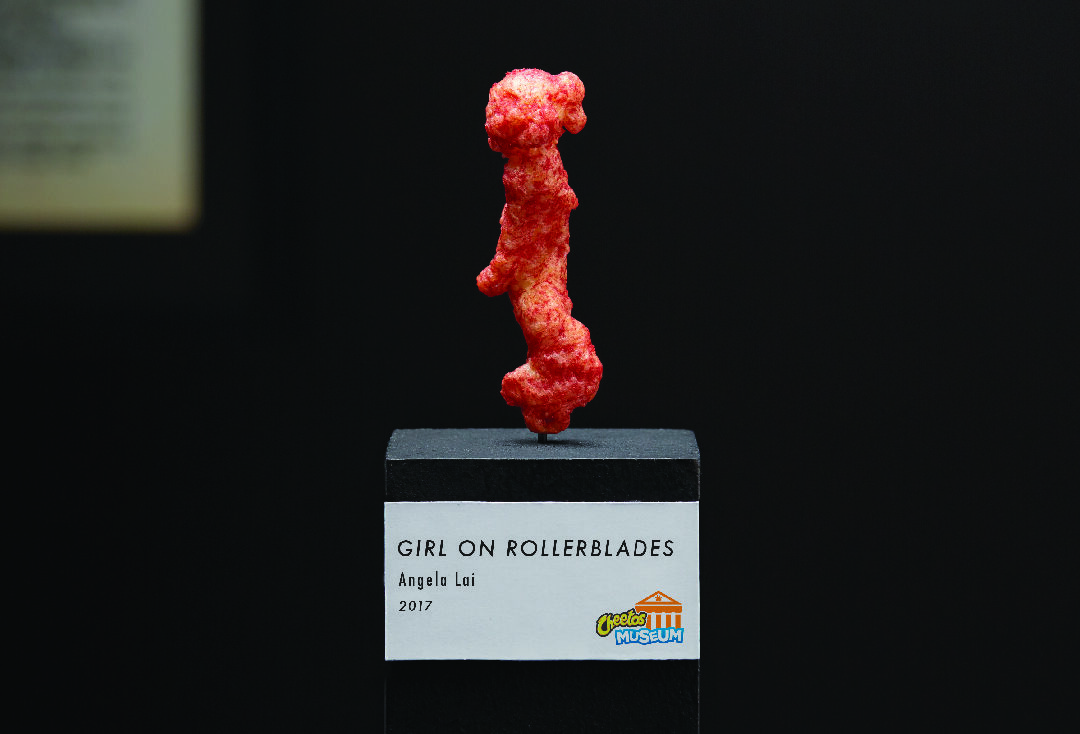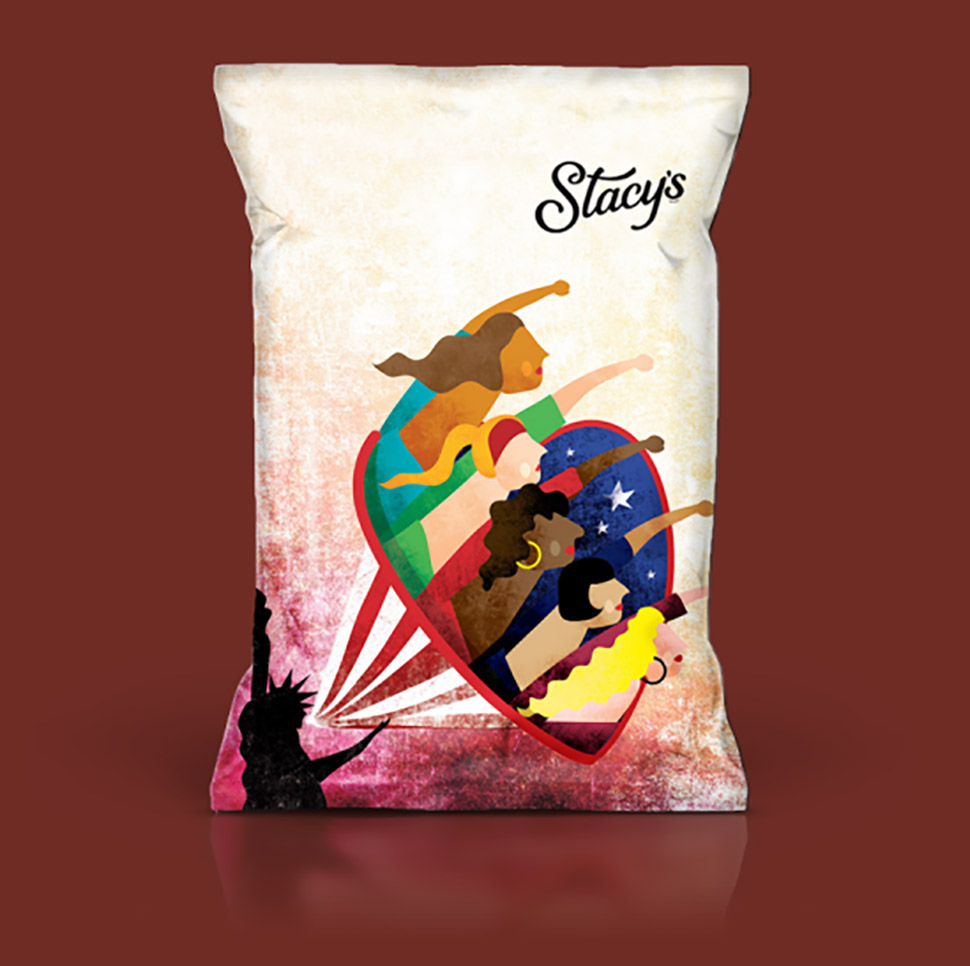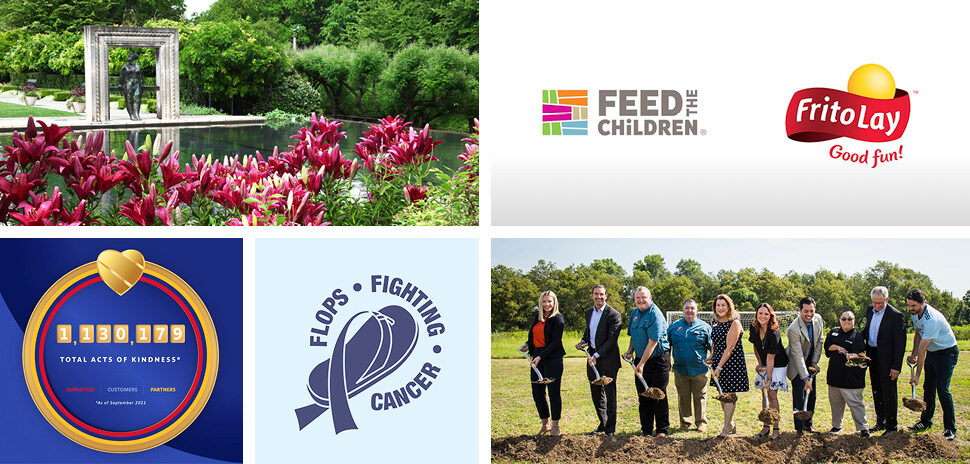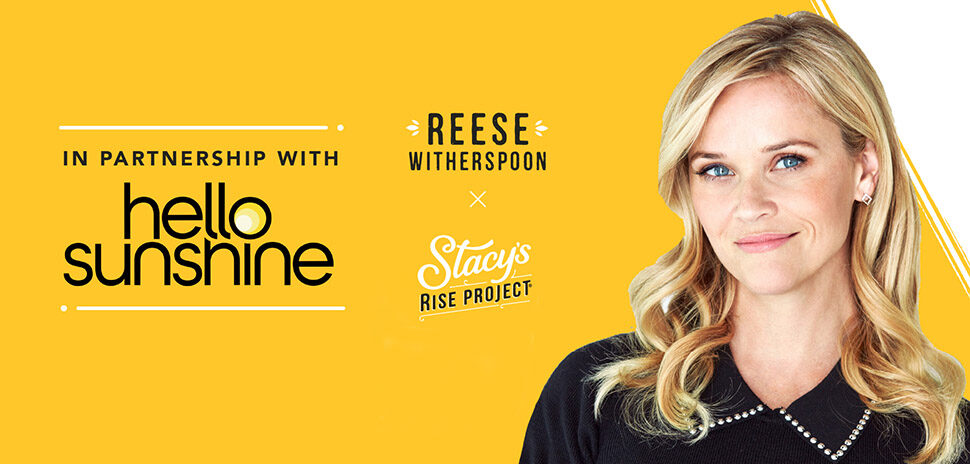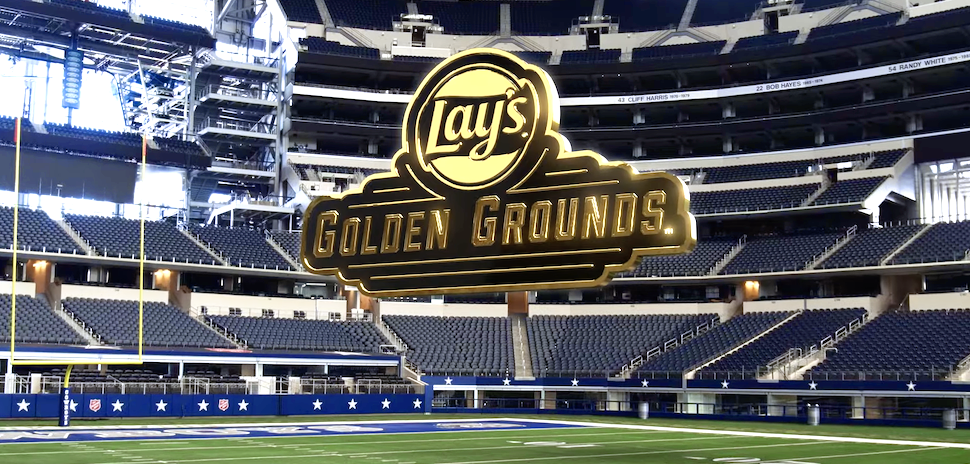You can’t learn from a Cheeto. But you can learn a lot from the people who market it—like why brands need to Innovate or Die. That’s the title of a session presented weeks ago at the Cannes Lions festival by Rachel Ferdinando, SVP and CMO of North Texas-based Frito-Lay North America, and Margaret Johnson, chief creative officer of Goodby Silverstein & Partners.
Their advice was so timeless, we got even more insights from Frito-Lay and offer highlights from the session below. Whether you’re a consumer company, an IoT sensor geek, or an entrepreneur just starting up, you can learn a lot from these 10 innovation tips.
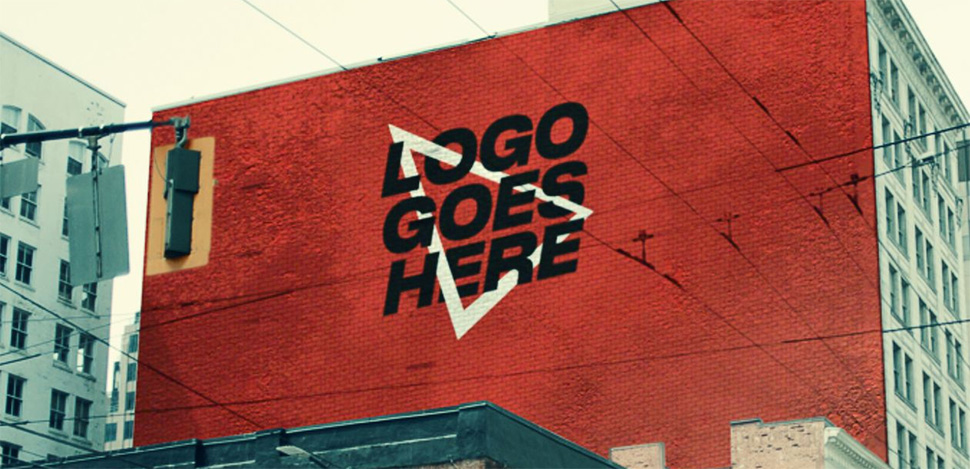
Doritos Brandless Campaign [Photo: Doritos]
#1 :: Be Fearless
“Innovation is scary. But the risk is worth the reward,” Ferdinando said in the session.
The greatest innovators don’t just take risks—they live for them. Stepping into unknown territory can make your company, brand, or product stand out like never before.
“There has to be a fearlessness at the top, and then that trickles down to the brand team,” Johnson said. “And Rachel has that fearlessness.”
One example: the Doritos Brandless campaign. To connect with ad-adverse Gen Z consumers, Doritos wiped all its logos off social media, becoming the first brand to go completely brandless on Facebook, Twitter, and Instagram. Billboards went up without the brand name, using only the Dorito’s triangle shape. Plain red and blue bags of Doritos were sold.
“When you’re dealing with a generation like Gen Z, who are about self expression and 82 percent are skipping ads, a traditional ad is not the way to go, and that’s what led to Brandless,” Ferdinando said.
Even the brand’s URL became a simple triangle emoji.
“The gamification of it was what the consumer loved about it,” Johnson said. “It gave them credit for their intelligence.”
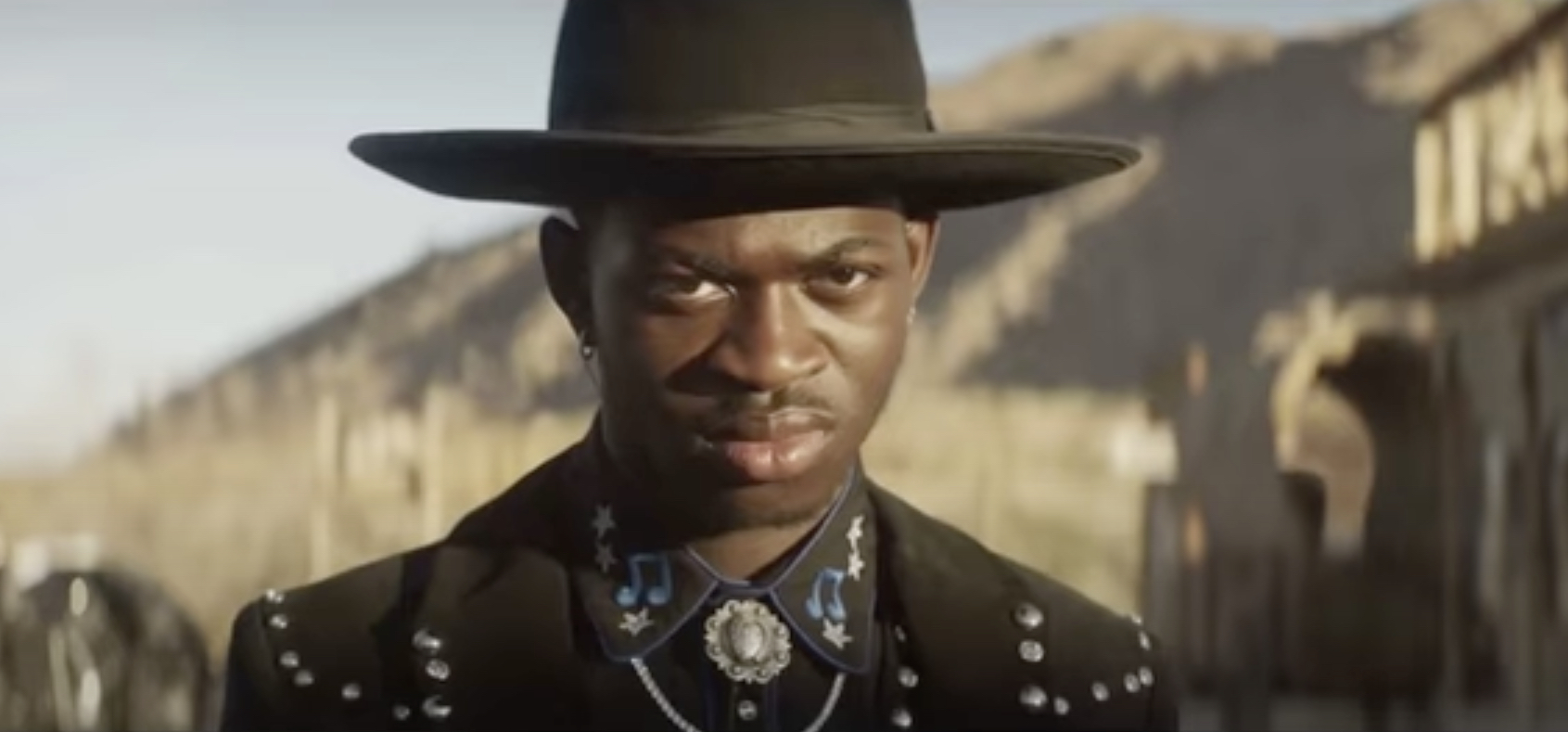
[Video still from Doritos commercial]
#2 :: Leverage What Makes Your Brand Different
“I think the drive for innovation really started when we stopped acting like a chip brand and started acting like an entertainment brand,” Johnson said in the session.
Frito-Lay believes that its true business isn’t snacks, it’s joy. So they look for ways to bring smiles to people everywhere by turning their brand into entertainment fans can engage with in all kinds of ways.
Their favorite place to do it? The Super Bowl.
“The Super Bowl is a massive cultural moment,” Ferdinando said. “And our ambition on that stage is to invite consumers to be co-creators with us.”
Doritos’ “Cool Ranch Dance” Super Bowl Campaign combined two stars at the height of pop culture at the time: Lil Nas X and Sam Elliott, the drawling character actor who’d co-starred in “A Star Is Born.” A Wild West gunfight between the two turned into a surprise AI-powered dance challenge.
In partnership with Sway AI, Ferdinando’s team developed the first AI-powered dance challenge that let fans dance just like the stars in the Super Bowl commercial—turning deep fake into dance with no skills required.
Cool Ranch Dance was launched on TikTok, enabling fans to use the duet feature to dance-battle Lil Nas X themselves. Soon celebs like Ryan Seacrest, Zedd, Dillon Francis, and Diplo were taking part in the challenge—and sharing their videos with millions of followers. Total TikTok views altogether: an astonishing 5.8 billion.
#3 :: Get Ahead of the Culture
“If innovation is the lifeblood of Frito-Lay brands, insights are the oxygen,” Ferdinando said in the session.
You can’t get those insights by sitting back and waiting for obvious trends to announce themselves. Instead, you need to get ahead of the curve. Identify something you can leverage in a way that will make a real splash—and cause some buzz of your own.
Ferdinando and her teams do this by going deep. To truly understand their consumers, they get immersed and obsessed with what they’re doing. One example: people were pulling randomly shaped Cheetos from their bags that looked like Abe Lincoln, the Eiffel Tower, or the Loch Ness monster. They’d send photos to Frito-Lay, post them online, and even try to sell their prized Cheeto.
Since fans were already doing this naturally, Ferdinando and her team leveraged it into a platform to showcase and engage with it.
The result: The Cheetos Museum, which opened for the summer of 2017 in the Ripley’s Believe It or Not! in New York’s Times Square. Made from 128,900 Cheetos, the museum featured Cheeto walls and Cheeto sculptures poised on pedestals. The cheesiest attraction: real-life Cheetos that looked like a girl on rollerblades, a guy taking a stroll, a pineapple, and more. All summer, fans everywhere were urged to submit more Cheeto-shape photos on Instagram and Twitter, with a $50,000 prize for the fan-voted winner.
The museum stunt was a crazy success. How crazy? Someone ended up paying $99,900 on eBay for a Cheeto that looked like Harambe the gorilla.
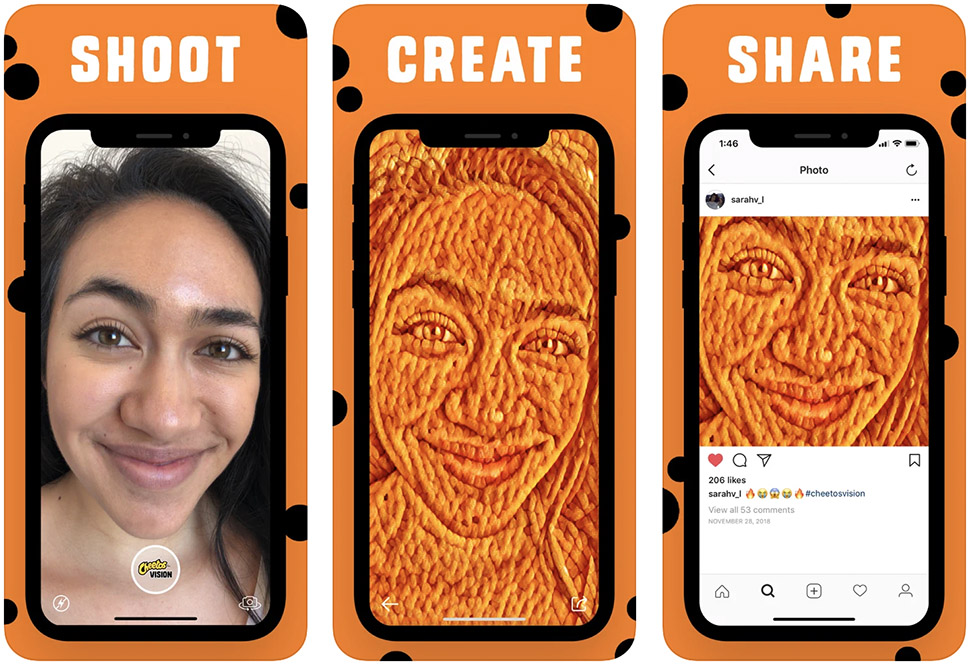
Image: Cheetos
#4 :: Timing is Everything
When you do something can be as important as what you do. Frito-Lay developed an app called Cheetos Vision that used AI to turn people’s selfies into a Cheetos-laced masterpiece. They launched it during South By Southwest around the same time as a new iPhone launch.
“It was just a perfect fit,” Ferdinando said in the session, calling the app “perhaps the most absurd use of artificial intelligence the world has ever seen.”
“Cheetos Vision was created to poke fun at our photo-obsessed selfie culture,” Johnson added. “We created a commercial that was very Steve Jobs-esque and had billboards all over Austin, Texas.”
The timing helped it catch on with SXSW revelers, who of course helped spread it all over the U.S. once the conference was over.
#5 :: Connect With People Where They’re Spending Time
Where you send your message—or target your customers—can be just as important as when.
Cheetos knows its core fan base practically lives on Snapchat. So for Super Bowl LV last February, they went beyond the “It Wasn’t Me” spot that aired during the game.
“Snap to Steal is a perfect example of taking a Super Bowl commercial and making it interactive,” Ferdinando said in the session.
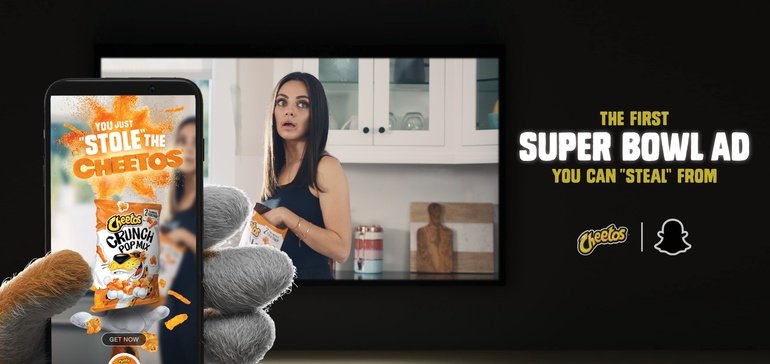
[Image: Cheetos]
“Knowing that Cheetos fans love mischief, we decided to stir things up and give them the opportunity to actually steal a bag of Cheetos during our commercials for the first time ever,” Johnson added.
Snapchat transformed all 1,440 frames from the commercial into scannable code. When someone held the app up to the Super Bowl spot, it would “unlock” a bag of Cheetos that seemed to be snatched right from the TV screen.
“It made them feel like they were part of the cult and like they were getting away with something,” Johnson said. “It was the most tweeted and Googled spot in the Super Bowl, and the number one in purchase intent.”
#6 :: Be a Force for Good
“Our purpose is to create moments of joy, and we want to live that purpose every day,” Ferdinando said in the session. “We know that 59 percent of our consumers want brands to represent their values through their action.”
In honor of Women’s History Month, Stacy’s created “March” bags using illustrations from the actual Women’s March in Washington, D.C.
“Why we love this idea—it was so authentic to the brand’s roots,” Ferdinando said. “Stacy’s was founded by a woman with incredible talent, passion, and determination. She’s just one of the millions of women who have paved the way toward the ultimate goal of equality.”
Johnson said they partnered with SnapChat to create custom snap codes that when scanned, used geotargeting to identify your Congressional representative—and let you call them by simply “snapping back.”
“It was an instantaneous way for your voice to be heard, and created the first bag of chips to ever call Congress,” Johnson said.
Another social good effort: launching a Tostito’s “Party Safe” bag on Super Bowl Sunday. Frito-Lay knew the Super Bowl is one of the biggest drinking days all year, causing a spike in drunk driving. So it joined forces with Uber and Mothers Against Drunk Driving to create a drive-safe campaign featuring the “Party Safe” bag.
“The high-tech bag detected alcohol on your breath,” Johnson said, “and would upload an Uber code for you to get a safe ride. 30,000 Safe Rides were given that Super Bowl Sunday.”
From launching Doritos Rainbows during the debate over gay marriage rights to Doritos Rock the Vote, which encouraged voter registration, the brand’s goal was to be bold.
“My advice for selling a provocative idea,” Johnson said, “is just to be relentless in your pursuit of ideas that sit outside of advertising and actually have a major impact on the world. Those are the projects that you’ll remember working on and really make a difference.”
#7 :: Hand Over Your Brand to the Consumer
During the pandemic, all kinds of startups and entrepreneurs tried to leverage the fact that millions were cooped up at home for weeks and months at a time. It was a tragic time for America and the world. But that’s when moments of joy are needed most.
“When the pandemic hit, the Doritos audience was really struggling,” Johnson said in the session. “A lot of them were out of work, and we wanted to appeal to their creative side, especially while they were stuck at home.”
Like their earlier crowd-sourcing campaign Crash the Super Bowl, Crash From Home asked fans to make their own Doritos commercial and submit them for cash prizes and a chance to appear in a compilation commercial.
“Crash From Home was more than a brand campaign. It was a creative outlet for our fans at a time when they needed it the most,” said Ferndinando. “At times, candidly, giving away control of your brand to the consumer can be scary, it’s certainly not without risk. We do it because it actually comes back to the core purpose of Frito-Lay, which is to transform moments with joy.”
“Co-creation is vital If you want to continue to build fans that truly love your brand,” she added.
Ferdinando and Johnson wrapped up their session with a few last pieces of advice:
#8 :: Go With Your Gut
“You have to go with your gut—you have to trust your instincts,” Johnson said. “Sometimes that means jumping without a parachute. No testing. [When] you have an idea that you know will resonate with people, it will elevate the brand.”
#9 :: Fail Forward
“Fail forward and learn from your mistakes and eventually you’ll be rewarded,” Johnson added.
#10 :: Stay True to Your Purpose
“I believe that truly iconic brands need to stay true to their purpose,” Ferndinando said. “But they at the same time need to constantly evolve and be in a state of reinvention.”
There’s a big reason why, she said, summing up everything the two had shared: “Innovation works.”
![]()
Get on the list.
Dallas Innovates, every day.
Sign up to keep your eye on what’s new and next in Dallas-Fort Worth, every day.

